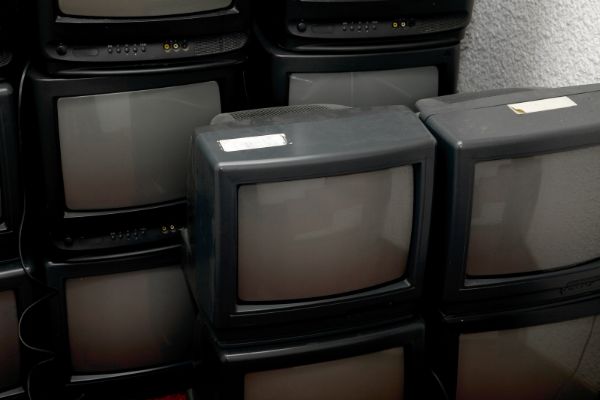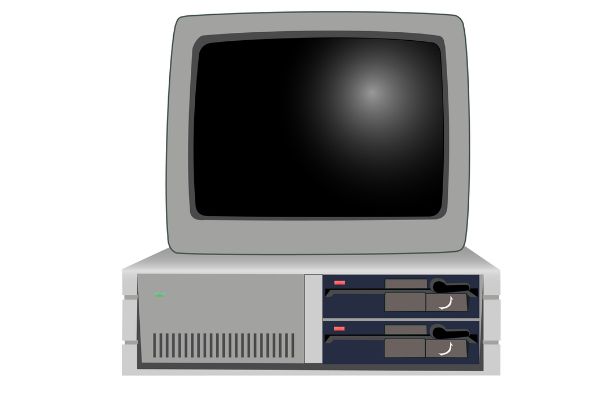Disclaimer: This post may contain affiliate links, meaning we get a small commission if you make a purchase through our links, at no cost to you. For more information, please visit our Disclaimer Page.
(Sony’s “curtain drop” on the production of new Cathode Ray Tube (CRT) monitors and TVs sealed the fate of CRT. With the technology of the late 90s and early 2000s, CRT couldn’t have supported 4k resolution. Although display technology has made progress since 2006, there are no 4k CRT monitors.
Table of Contents
Is CRT Better than Led?
Technology develops all the time, causing old CRT monitors and TVs to give way to higher definition, lighter weight flat screens. A better user experience means technology must meet these needs: vivid colors, better resolution, harmless to the eyes, and lighter weight.
Here’s a comparison of CRT and LED to help inform your choice if you’re looking to purchase a TV or monitor:
Description
CRT works by moving an electron across the screen (back and forth). The screen has phosphor-coated electrons or dots arranged on it that emit light when the electron beam collides with them. The beam activates the pixels arranged in lines to produce an image on the screen.
Light-Emitting Diode (LED) monitors are LCD monitors with an LED backlight. The lights on the LCD panels increase the definition and brightness of the pictures and videos on the screen. This is just a brief explaination, check out this article that goes more in depth.
Power use
CRT displays use a large amount of power for their size, with a TV needing about 0.3 Watt per square inch. However, some HDTVs use more energy than certain CRTs because of their larger screens and greater area.
LEDs use even less power than CRTs and produce more reliable pictures. They also offer several power-saving features and greater efficiency. High-end LED TVs use about 0.1 Watt per square inch (at default settings),
It’s closer to 0.075 Watt per square inch if a user calibrates it to their taste. Of course, you can always measure the total screen area to determine the display’s power use.
Environmental concerns
CRTs have relatively high concentrations of phosphors and lead, making recycling and disposing of them challenging. If they aren’t disposed of properly, they can cause pollution problems. Also, most recyclers either charge an exorbitant fee to handle them, or they refuse to deal with them at all.
LEDs have no mercury, which is a little friendlier to the environment. However, making semiconductors and high-quality glass use vast amounts of energy. The environmental impact of manufacturing and transporting LEDs usually results in a net loss.
Cost
A ton of CRT TVs are pretty affordable, some costing less than $20! On the contrary, LED TVs can cost anywhere from a $100-300 to upward of 1,000+ depending on brand, size, condition and resolution.
Response time, image, and color
CRT displays produce more authentic, better colors, independent of the viewing angle. Even today’s wide viewing angle displays provide a slightly different experience when viewing it from angles.
While CRT supports a black and white feature, whereas LED doesn’t, CRT monitors have a flicker that may harm the eyes, but LED monitors are easy on the eyes. An LED display is also age and temperature-dependent, whereas CRT has no such concerns.
Some of the best advantages of CRT over LCD include their zero lag and absence of native resolution (low resolutions have no blur). They also have higher refresh rates and a better contrast ratio, making images look deeper and richer.
Are There 4k CRT Monitors?
CRT monitors, vinyl records, and portable CD players all fell out of fashion in a flash. In 2001, three out of four monitors sold were a CRT. Today, you’ll find CRTs gathering dust in people’s garages or being sold or auctioned on online retail sites.
Unfortunately, CRTs didn’t make it far enough in the display “progress pipeline” to reach 4k technology. LED, LCD, OLED, and IPS are the new names that count, and they can handle the beauty that is 4k technology.
4k and LED screens use the same technology: light-emitting diodes coat the screen to produce individual colors. While a standard 720p LED monitor has a horizontal pixel count of 1280p, a 4k monitor has 3,840p or more.
CRT monitors and TVs don’t have a native or maximum resolution, but some of them could/can go beyond the advertised specs, including:
- The ViewSonic P225f – could achieve 2560 x 1920 at 63Hz
- The Sony GDM-Fw900 – starts at 2304 x 1440 but could reach 2560 x 1600 at 75Hz
To push a CRT beyond its advertised spec, you would have to override the Extended Display Identification Data (EDID) and force custom resolutions. However, geometry and clarity are issues that arise at these higher resolutions. Variations on these issues depend on the monitor’s capabilities, RAMDAC speed, and the cable you use (VGA vs BNC).
If CRTs had stayed in production, there could have been 4k CRT monitors. However, the limitations that pushed them out of fashion are theoretically surmountable today. So despite a 4k CRT being theoretically possible, you’d have to make too many trade-offs to maintain balance color, size, and power.
Ultimately, it would be a fool’s errand. But do you really need 4k on CRT? A resolution of 1680 v 1050 on an FW900 probably looks as good as 4k, though. If you still want a 4k CRT monitor, here’s a refresher on why CRTs faded out of use:
- They are big and heavy, some weighing a little over 300 pounds.
- CRTs are expensive to produce—the circuitry and other raw materials needed are costly.
- The high voltage system (1000V-40000V acceleration voltage) and vacuum vessel are dangerous. Mechanical abuse of the vacuum vessel can send sharp glass splinters flying at fatal speeds.
- Almost all CRTS, especially those used in screens, emit rays—x-rays during operation and low-frequency electromagnetic waves.
- These monitors were prone to image burn-in.
- They have analog technology that requires the adjustment of many analog parameters to get the best image quality.
- CRT’s horizontal deflection coils had a 15.625 kHz whine that could be annoying.
- CRTS are very sensitive to magnetic fields and need to be adjusted to the magnetic field of the location where they’re used.
- Difficult to recycle
For the benefits CRT monitors bring, they carry even more disadvantages. So, out with the old, and in with the new.
Are CRTs Better for Gaming?
Premium-priced gaming LCDs today are trying to recapture the significant benefits of CRT, including reduced input lag, low latency, and high refresh rates. Despite their efforts, they’re still catching up.
Some people within PC gaming circles insist that CRT monitors are better for games. There’s also a sub-culture of First-Person Shooter (FPS) fans who stand by their belief that FPS games look better on high-end CRT. Here are some features that make CRTs better for gaming:
- A faster input response
- Less motion blur or almost no motion blur on the screens
- They can play at lower resolutions (like 1024 x 768) with high-detail visuals
- A higher refresh rate
These benefits are highly evident when playing retro games, but they are surprisingly present even when playing modern games.
Unfortunately, it’s pretty challenging to get a CRT monitor that works well with modern PC games. Good CRTs are also expensive and difficult to find, costing hundreds or thousands.
Here are more features that make CRTs unsuitable for gaming:
- Aspect ratio problems.
- They are notoriously huge and heavy.
- CRTs have a lower overall image and quality than modern monitors.
- It’s challenging to output from CRTs to modern computers—you need a converter or a GPU with an analog.
- They have a luminance issue as they age and maintenance difficulties if they break.
You may remember CRT monitors for their back-breaking ability on hauling, but you can’t deny their prowess with gaming. So, if you want to tap into nostalgia, a CRT monitor is the most practical and versatile choice for you.


